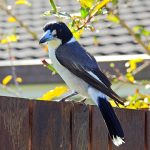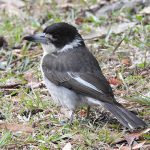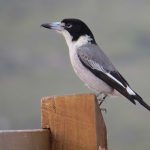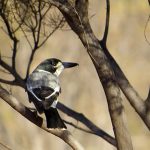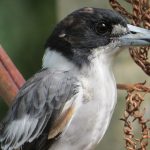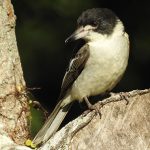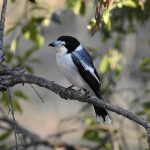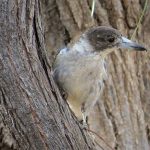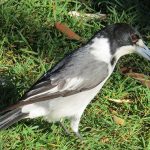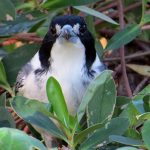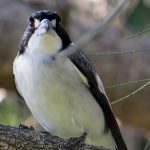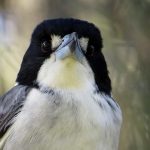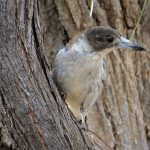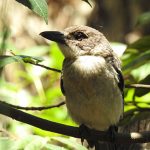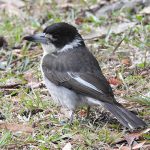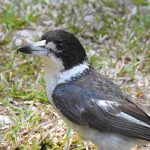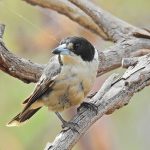GREY BUTCHERBIRD
The Grey Butcherbird is a medium-sized bird, measuring around 30 to 35 cm in length. It has a distinctive grey plumage, a black face mask extending from the bill to the eyes, and a white patch on the wings. Juveniles have a browner plumage with mottled markings.
The Grey Butcherbird is native to Australia and is found across most of the mainland, except for some arid and tropical regions. It inhabits a wide range of habitats, including forests, woodlands, parks, and urban areas. Even though it is a relatively adaptable species and can tolerate a range of habitats, including urban areas, habitat loss, fragmentation, and the spread of invasive species can still pose threats to their populations.
They are carnivorous birds with a diet primarily consisting of insects, small mammals, reptiles, birds, and even other smaller birds. They are skilled hunters and use their strong hooked bills to catch and kill their prey. They may impale larger prey on thorns or spikes to store for later consumption.
Like the Black Butcherbird, the Grey Butcherbird is known for its melodious and complex songs. Its vocal repertoire includes musical notes, trills, and whistles. They have a remarkable ability to mimic other bird calls and even mimic various sounds in their environment.
Grey Butcherbirds are monogamous birds and form long-term pair bonds. They build nests made of sticks and twigs in trees, usually near the trunk. The female lays 2 to 4 eggs, which are incubated by both parents. The chicks hatch after approximately 20 days and are fed by both parents until they fledge.
The Grey Butcherbird belongs to the butcherbird family (Cracticidae), which also includes the Black Butcherbird (Cracticus quoyi) and the Pied Butcherbird (Cracticus nigrogularis). These birds share similar predatory behavior and are known for their strong bills.

